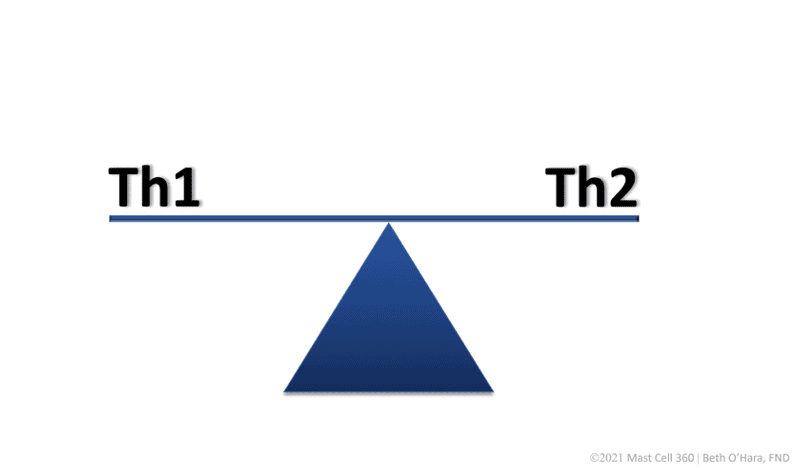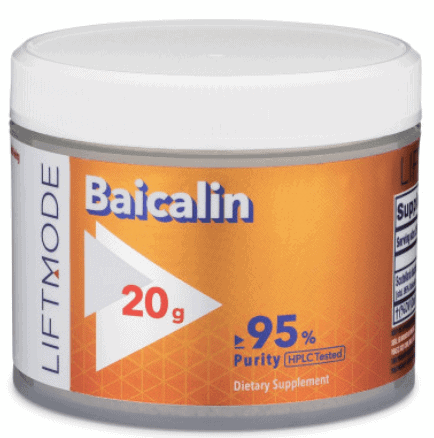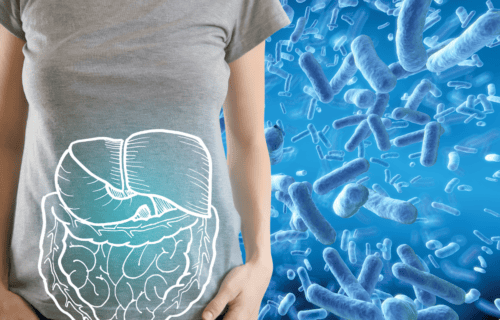
Cytokines, Mast Cells, and Mast Cell Activation Syndrome: What to know if you have Mast Cell Activation Syndrome or Histamine Intolerance
If you have Mast Cell Activation Syndrome or Histamine Intolerance (or both!), you may have heard of cytokines.
But maybe you weren’t really sure what cytokines were. Then in 2020, cytokines became a household word because of current events.
So, what are cytokines?
Where do they come from?
And how are they involved with mast cell issues?
Let’s jump right in!
What Are Cytokines?
Cytokines are signalers. That’s the big thing to know about them.
They are a type of protein that communicates to several types of immune system cells.
Basically, when cytokines are released, they signal the immune system to do its job.
One example would be if a bacterial or viral invader is present. The immune system needs to take them out.
The body has many types of cells which produce cytokines. They are all immune related cells. Today, we’ll focus on one of the most important types in your body: mast cells.
Here’s a brief overview about your mast cells:
Mast cells can be triggered by all kinds of things. That’s where we get mast cell activation.
Mast Cells can be triggered by:
- Viruses or bacteria
- Allergens, like pollen, food proteins, or even a mold allergy
- Injuries
- Or normal things that happen in the body, like hormones or neurotransmitters
These are just a few things that can trigger a response from mast cells.
And what happens when mast cells get triggered?
They release mediators.
There are all kinds of different types of chemical mediators in mast cells. You might already be familiar with one type: histamine. But there are actually HUNDREDS of mast cell mediators!
Another very important category of mast cell mediators is the cytokine mediators.
Several cytokines are inflammatory. There are also anti-inflammatory cytokines. But we’ll be focusing on the pro-inflammatory ones related to Mast Cell Activation Syndrome.
Before we go any further, though, let’s briefly review.
When your mast cells have been triggered, they release chemical mediators.
Several of those mediators may be different types of cytokines.
Some cytokines are inflammatory.
And you probably know by now that with Mast Cell Activation Syndrome (MCAS) comes a lot of inflammation.
Let’s learn about that next.
Cytokines and Inflammation
These are some of the key cytokines which create inflammation:
- Interleukin-6 (IL-6)
- Interleukin-1b (IL-1b)
- Tumor Necrosis Factor alpha (TNFα)
IL-6 and TNFα are drivers behind something you may have heard about: C-reactive protein. C-reactive protein (CRP) is a measure of inflammation in the body.
And IL-6 is the main player in severe cytokine issues some people get from viral infections.
IL-6 is produced by mast cells and other immune cells. It’s involved in lung issues, sepsis (serious blood infection), and damage to tissues.
And IL-6 and TNFα are usually higher with Mold Toxicity.
A study was published in the 2005 issue of Clinical and Experimental Allergy. The study found that two mycotoxins (citrinin and gliotoxin) were linked to higher levels of IL-6 and TNFα in the body.
So, you can imagine how Mold Toxicity can create such serious inflammatory issues.
Mold Toxicity is the #1 Root Trigger I see for Mast Cell Activation Syndrome in my practice.
If you happen to know you have higher levels of IL-6 and TNFα, it’s worth checking for Mold Toxicity.
So, cytokines can lead to inflammation. That’s one way they can cause issues.
Cytokines can also get out of control. When this happens, it can be very serious.
Serious cytokine issues can happen when the body’s response to an infection becomes over-activated.
Specifically, this can sometimes occur in some people with specific viral infections and conditions like:
- Flu (like the H5N1 “bird” flu)
- SARS viruses
- MERS viruses
- Multiple Sclerosis
Basically, the inflammation gets out of control. Way out of control.
And when mast cells get over-active, they release more cytokines. And that means more inflammation.
There are certain symptoms to watch for with excess cytokines that can happen with those types of viruses:
- High fever and chills
- Swelling of arms, legs, hands, feet
- Coughing
- Shortness of breath
- Muscle and joint pain
- Severe fatigue
- Very low blood pressure
- Clotting issues
Of course, those can be symptoms of other conditions as well. But they are some things to watch for.
Now, I also want to be sure we cover what’s called Th1/Th2 balance.
You’ll see its importance in talking about cytokines. I’ll break it down into simple terms for you next.
Th1 vs. Th2 Cytokines
When we talk about cytokines, we have to talk about the Th1/Th2 balance.

Th1 and Th2 are immune cells that release cytokines.
The “Th” stands for “T helper” cells.
Th1 cells make up the initial wave of immune response which kills off viruses and bacteria.
Th2 cells are involved in chronic inflammation.
Your Th2 immune cells kick in when you struggle to get rid of infections. And they cause significant widespread inflammation in your body.
This can happen when your body is struggling with other issues alongside the infection you are trying to fight off. Issues like mold toxins, chemical toxins, and/or a lot of stress.
So, when we have things like Mold Toxicity, the seesaw gets tipped. When this happens, our T helper immunity looks like this:

When your Th2 cells become overactive, your Th1 cells become suppressed.
That can lead to all kinds of bacterial and viral Infections. It can even lead to chronic infections like Epstein-Barr. Or the body may not be able to get rid of Lyme and other co-infections.
Related Article: Non Toxic Tick Prevention for those with Sensitivities
And on top of that, you can get an elevated mast cell response.
It kind of creates this loop where the Th1 response is kept down. At the same time, the Th2 response is being kept up. That means the Th2 cytokine is causing more inflammation.
We always have to ask, “Why is this happening? What’s the big thing that’s causing this to happen?” Quite often, it’s Mold Toxicity.
I’ll come back to it again, and again, and again. Mold Toxicity is one of our biggest root triggers.
Mold toxins cause a major double whammy in Mast Cell Activation Syndrome.
- They disrupt the Th1/Th2 balance.
- Mold toxins mess up the nervous system signaling. And that causes even more Mast Cell Activation issues.
I know, I talk about mold toxins a lot. But it’s because they are a BIG deal in Mast Cell Activation Syndrome. And not enough people are giving it the attention it deserves, yet.
Chronic stress and a history of early traumas can also affect this Th1/Th2 balance.
The nervous system and immune system are intertwined – you can’t really separate them.
Chronic stress causes major imbalances in Th1/Th2 balance. This makes it harder to fight off colds, flu, and other viruses. And causes a lot of Mast Cell Activation.
Very targeted nervous system support is one of the most important ways to help get Mast Cells back in balance.
Next, we’ll look at a couple of supplements that could help, too.
It’s important you know that this blog post is for informational and educational purposes. It’s not meant to treat any health condition or to be prescriptive for anyone. If you have any medical condition, it is critical you work under the care and guidance of a licensed medical provider.
Cytokine Balancing Supplements
So, you saw how much the cytokines play a role in signaling.
We also talked about the Th1/Th2 balance. That’s where the chronic inflammation is high and the pathogen killing is low.
We want to get a better Th1 response and reduce the overactive Th2 response.
Research has shown that certain supplements can be helpful with supporting cytokine balance. Two of my favorite go-tos in the Mast Cell 360 practice are:
- Perilla seed extract
- Baicalin (Chinese skullcap extract)
I always recommend if you have Mast Cell Activation Syndrome to start new supplements low and slow with microdosing.
I’ve used these two supplements a lot for myself and in my practice and have seen great results. So, they can be a really good place to start for cytokine modulating.
Let’s start with an overview of Perilla seed extract.
Perilla Seed Extract
Perilla seed extract has been shown to lower histamine. In a study of people with seasonal allergies, perilla helped lessen symptoms.
Plus, Perilla seed extract has been shown in a study to lower TNFα (an inflammatory cytokine). Perilla seed extract has also demonstrated properties as a really good modulator of the Th1/Th2 balance.
There are 2 sources for Perilla Seed Extract I use the most.
First, you can try this Perilla Seed Extract by Pure Encapsulations:
Alternatively, you can Perimine by Metagenics:
”I find the Perimine to be a little more effective. But I wanted you to have 2 options in case you have a filler sensitivity.
When you register for an account under Mast Cell 360, you’ll get 15% off any Fullscript supplement order anytime. And it helps support our free content!
Now, let’s look at Baicalin.
Baicalin (Chinese Skullcap Extract)
Baicalin, again, is an extract from Chinese skullcap. There are several types of Skullcap species. And the Baicalin extract can be a little challenging to find.
According to cell studies, baicalin also lowers TNFα (an inflammatory cytokine). Baicalin also suppressed mast cell degranulation and histamine release in animal studies.
Most skullcap products are actually American Skullcap, which is definitely NOT the same thing. So, be sure to read the label. American Skullcap has very different properties.
The latin name of Chinese Skullcap is Scutellaria baicalensis. It is also called Huang Qin.
I most often use this Chinese Skullcap Extract, Baicalin:

Note: They also carry Baicalein (see the extra e in the name?). It is much more potent, so if you’re sensitive, I’d start with Baicalin.
Use coupon code MASTCELL10 to get 10% off Baicalin!
Super sensitive people may do better starting with a tincture of Chinese Skullcap, though. Here is an alcohol free option:

Can I Take Perilla Seed Extract or Baicalin If I Have Oxalate or Salicylate Intolerance?
I had both Perilla seed extract and Baicalin tested for oxalates. They both tested extremely low oxalate.
They will have some salicylates. Perilla seed extract is a good bit lower salicylate than Baicalin. I’ve had a number of people with Salicylate Intolerance be able to take Perilla seed extract.
I have a few people with salicylate intolerance who can take baicalin, but not as many.
You can learn a lot more about perilla seed, baicalin, and other supportive supplements — plus plenty of details on introducing them the right way, and troubleshooting tips, like what to try if you have salicylate intolerance or oxalate intolerance — in my Top 8 Mast Cell Supporting Supplements Master Class!
Ready to work on supporting healthy mast cells and cytokine levels?
Here’s what’s included in this Master Class:
- The Top 8 Mast Cell Supporting Supplements that your doctor doesn’t even know about
- In depth information on the Actions and Benefits of these 8 Mast Cell Supporting Supplements
- What supplements NOT to take if you have Mast Cell Activation
- How to know which of these Top 8 supplements can work for you
- Troubleshooting Supplement Sensitivities
- How to Introduce Supplements the RIGHT way for Mast Cell Activation
- The top 7 things to do right away (including supplements and more) during a reaction or a flare-up
- What to do if you are still having symptoms
More Mast Cell Supporting Resources:
- Nervous System Balance is Essential in Mast Cell Activation Syndrome and Histamine Intolerance
- Health Benefits of Quercetin
- Histamine Lowering Probiotics
- Paraprobiotics: Can Paraprobiotics Support Mast Cells
- Make Your Personal MCAS Flare Up Plan
Some links in this website are affiliate links, which means Mast Cell 360 may make a very small commission if you purchase through the link. It never costs you any more to purchase through the links, and we try to find the best deals we can. We only recommend products that we love and use personally or use in the Mast Cell 360 practice. Any commissions help support the newsletter, website, and ongoing research so Mast Cell 360 can continue to offer you free tips, recipes, and info. Thank you for your support!
References
The American Cancer Society medical and editorial content team. (2019, December 27). Cytokines and Their Side Effects. American Cancer Society. https://www.cancer.org/treatment/treatments-and-side-effects/treatment-types/immunotherapy/cytokines.html
Bansal, T., Pandey, A., D, D., & Asthana, A. K. (2014). C-Reactive Protein (CRP) and its Association with Periodontal Disease: A Brief Review. Journal of clinical and diagnostic research : JCDR, 8(7), ZE21–ZE24. https://doi.org/10.7860/JCDR/2014/8355.4646
Bui TT, Piao CH, Song CH, Lee C-H, Shin HS, Chai OH. (2017). Baicalein, wogonin, and Scutellaria baicalensis ethanol extract alleviate ovalbumin-induced allergic airway inflammation and mast cell-mediated anaphylactic shock by regulation of Th1/Th2 imbalance and histamine release. Anatomy & Cell Biology, 50(2):124-134. https://doi:10.5115/acb.2017.50.2.124. 61
da Silva EZM, Jamur MC, Oliver C. (2014). Mast cell function: a new vision of an old cell. Journal of Histochemistry & Cytochemistry. 62(10), 698-738. https://doi:10.1369/0022155414545334
Hsieh C-J, Hall K, Ha T, Li C, Krishnaswamy G, Chi DS. (2007). Baicalein inhibits IL-1β-and TNF-α-induced inflammatory cytokine production from human mast cells via regulation of the NF-κB pathway. Clinical and Molecular Allergy. 5(1)(5):1-10. https://doi:10.1186/1476-7961-5-5. 63
Imaoka K, Inoue S, Takahashi T, Ojima Y. (1993). Effect of Perilla frutescens extract on anti-DNP IgE antibody production in mice. Japan Journal of Allergology, 42, 74–80.
Isis M. (1998). The golden root: Clinical applications of Scutellaria baicalensis Georgi flavonoids as modulators of the inflammatory response. Alternative Medicine Review, 3, 472-480. 62.
Johannessen, L. N., Nilsen, A. M., & Løvik, M. (2005). The mycotoxins citrinin and gliotoxin differentially affect production of the pro-inflammatory cytokines tumour necrosis factor-alpha and interleukin-6, and the anti-inflammatory cytokine interleukin-10. Clinical and experimental allergy : journal of the British Society for Allergy and Clinical Immunology, 35(6), 782–789. https://doi.org/10.1111/j.1365-2222.2005.02249.x
Kim D-S, Son E-J, Kim M, Heo Y-M, Nam J-B, Ro JY, Woo S-S. (2010). Antiallergic herbal composition from Scutellaria baicalensis and Phyllostachys edulis. Planta Medica, 76(7), 678-682. doi:10.1055/s-0029-1240649. 64.
Kimata M, Shichijo M, Miura T, Serizawa I, Inagaki N and Nagai H. (2000). Effects of luteolin, quercetin and baicalein on immunoglobulin E-mediated mediator release from human cultured mast cells. Clinical and Experimental Allergy, 30, 501-508. https://doi/abs/10.1046/j.1365-2222.2000.00768.x
Makino T, Furuta Y, Wakushima H, Fujii H, Saito K and Kano Y. (2004). Antiallergic effect of Perilla frutescens and its active constituents. Phytotherapy Research. 17, 240-243.
Makino T, Furuta Y, Wakushima H, Fujii H, Saito K and Kano Y. (2001). Effect of oral treatment of Perilla frutescens and its constituents on type-I allergy in mice. Biological and Pharmaceutical Bulletin, 24(10), 1206-1209.
Sanbongi C, Takano H, Osakabe N, Sasa N, Natsume M, Yanagisawa R, Inoue K-I, Sadakane K, Icinose T and Yoshikawa T. (2004). Rosmarinic acid in perilla extract inhibits allergic inflammation induced by mite allergen, in a mouse model. Clinical & Experimental Allergy, 34, 971-977. https://doi/10.1111/j.1365-2222.2004.01979.x
Shin, T, Y., Kim, S. H., Kim, S. H., Kim, Y. K., Park, H. J., Chae, B. S., Jung, H. J., Kim, H. M. (2000). Inhibitory effect of mast cell-mediated immediate-type allergic reactions in rats by Perilla frutescens. Immunopharmacol Immunotoxicology, 22(3);489-500.
Shin, T, Y., Kim, S. H., Kim, S. H., Kim, Y. K., Park, H. J., Chae, B. S., Jung, H. J., Kim, H. M. (2000). Inhibitory effect of mast cell-mediated immediate-type allergic reactions in rats by Perilla frutescens. Immunopharmacol Immunotoxicology, 22(3);489-500.
Spoerl, D., Nigolian, H., Czarnetzki, C., & Harr, T. (2017). Reclassifying Anaphylaxis to Neuromuscular Blocking Agents Based on the Presumed Patho-Mechanism: IgE-Mediated, Pharmacological Adverse Reaction or “Innate Hypersensitivity”?. International journal of molecular sciences, 18(6), 1223. https://doi.org/10.3390/ijms18061223
Takano H, Osakabe N, Sanbongi C, Yanagisawa R, Inoue K-I, Yasuda A, Natsume M, Baba S, Ichiishi E-I and Yoshikawa T. (2004). Extract of Perilla frutescens enriched for rosmarinic acid, a polyphenolic phytochemical, inhibits seasonal allergic rhinoconjunctivitis in humans. Exp Biol Med, 229, 247-254.
Ueda H, Yamazaki C and Yamazaki M. (2002). Luteolin as an anti-inflammatory and anti-allergic constituent of Perilla frutescens. Biological and Pharmaceutical Bulletin, 25(9), 1197-1202.
Wang G, Mohammadtursun N, Lv Y, Zhang H, Sun J, Dong J. (2018). Baicalin Exerts Anti-Airway Inflammation and Anti-Remodelling Effects in Severe Stage Rat Model of Chronic Obstructive Pulmonary Disease. Evidence-Based Complementary and Alternative Medicine. 7591348, 1-14. https://doi:10.1155/2018/7591348
Xu L, Li J, Zhang Y, Zhao P, Zhang X. (2017). Regulatory effect of baicalin on the imbalance of Th17/Treg responses in mice with allergic asthma. Journal of Ethnopharmacology, 208, 199-206. https://doi:10.1016/j.jep.2017.07.013. 60
Yano S, Tachibana H and Yamada K. (2005). Flavones suppress the expression of the high-affinity IgE receptor Fc‐RI in human basophilic KU812 cells. Journal of Agricultural and Food Chemistry, 53, 1812-1817.
Yano S, Umeda D, Maeda N, Fujimura Y, Yamada K and Tachibana H. (2006). Dietary apigenin suppresses IgE and inflammatory cytokines production in C57BL/6N mice. Journal of Agricultural and Food Chemistry, 54, 5203-5207.
Yano S, Umeda D, Yamashita T, Ninomiya T, Sumida M, Fujimura Y, Yamada K and Tachibana H. (2007). Dietary flavones suppresses IgE and Th2 cytokines in OVA-immunized BALB/c mice. European Journal of Nutrition, 46, 257-263
Yan X, Yan J, Huang K, Pan T, Xu Z, Lu H. (2017). Protective effect of baicalin on the small intestine in rats with food allergy. Life Sciences. 191, 111- 114. https://doi:10.1016/j.lfs.2017.09.036. 65




Your picture at the top is a rendering by scientificanimations.com not a microscopic picture of cytokines. Additionally, The blue portion is a cell and the tiny pink dots are the cytokines.
Hi Teersa,
Thank you so much for letting us know it is a rendering!
I recently purchased your supplement
guide and your master reboot class. How do I sign up for fullscript to get the supplements suggested? I am on a waitlist to hopefully work with you.
Hi Brittany,
To sign up for FullScript, just click on any of the links provided. Type in your email address. If you don’t already have an account associated with that email address, the next step will direct you to set up a password, rather than type one in. If you already have an account associated with that email address, the next step will ask for your password. Once you set up the account through one of our links, you will get 15% off all your orders.
For HIPAA reasons, could you please contact us via email about any specifics regarding working with Beth? Thank you very much!
Suz, MC360